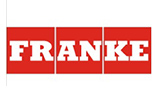Market Overview
The Malaysia Fitness Service Market is set for robust growth from 2025 to 2033, fueled by rising health consciousness, urbanization, digital fitness trends, and increasing disposable incomes. As Malaysians become more aware of the benefits of regular exercise and preventive healthcare, fitness service providers are expanding their offerings to meet diverse consumer demands.
In 2024, the market was valued at approximately MYR 1.5 billion and is projected to grow at a compound annual growth rate (CAGR) of 7.5%, reaching an estimated MYR 2.8 billion by 2033. This growth is attributed to the rising penetration of gym memberships, the expansion of boutique fitness studios, and the adoption of technology-driven fitness solutions.
Key Growth Drivers
1. Increased Health Awareness and Preventive Healthcare Focus
- More Malaysians are prioritizing physical fitness, mental well-being, and disease prevention.
- Rising cases of obesity, diabetes, and cardiovascular diseases are pushing people towards structured fitness programs.
- Government initiatives promoting healthy lifestyles and corporate wellness programs are contributing to fitness service expansion.
2. Urbanization and Changing Lifestyles
- Malaysia’s urbanization rate has reached over 78%, leading to sedentary work environments and increased demand for fitness solutions.
- Time-constrained professionals are opting for convenient, flexible, and technology-integrated workouts, such as 24/7 gyms, virtual classes, and personal training apps.
3. Digital Fitness and Smart Technology Integration
- The fitness industry is witnessing a major shift towards virtual training, AI-based workout tracking, and wearable fitness devices.
- Over 50% of Malaysians use fitness apps or wearable technology, driving demand for hybrid fitness models that combine physical gym memberships with online coaching.
- Virtual reality (VR)-based workouts and gamified fitness solutions are enhancing user engagement and retention.
4. Expansion of Boutique Fitness Studios
- Boutique fitness studios offering specialized programs such as Pilates, HIIT, CrossFit, and spinning have gained significant traction.
- Consumers are increasingly seeking unique, community-driven workout experiences over traditional gym setups.
- High disposable income groups are willing to pay premium prices for personalized, high-end fitness services.
5. Corporate Wellness Programs and Employer-Sponsored Fitness
- Companies in Malaysia are recognizing the importance of employee well-being and productivity, leading to increased corporate fitness partnerships.
- Large firms offer fitness memberships, in-office wellness programs, and online health coaching as part of employee benefits.
- The corporate fitness market is expected to grow by 10% annually, driven by increased employer investments in health initiatives.
6. Increased Demand for Budget and Mid-Range Gyms
- While premium fitness centers continue to thrive, affordable and mid-tier gym chains are experiencing strong demand.
- Consumers are looking for cost-effective yet high-quality fitness options, leading to the rise of budget gyms such as Anytime Fitness and local independent gyms.
- The pay-per-use and subscription-based models are gaining popularity, allowing flexibility in fitness spending.
Challenges in the Market
Despite positive growth trends, the fitness service market in Malaysia faces several challenges:
- High Competition and Market Saturation – Urban areas, especially Kuala Lumpur and Selangor, have an oversupply of fitness centers, making differentiation critical.
- Economic Uncertainty and Affordability Concerns – In times of financial instability, consumers often cut down on discretionary spending, including gym memberships.
- Consumer Retention and Engagement – The fitness industry struggles with high membership churn rates, requiring innovative strategies to maintain customer loyalty.
- Regulatory Compliance and Licensing – Fitness operators must adhere to strict health and safety regulations, labor laws, and membership contract policies.
Future Outlook (2025-2033)
The Malaysia fitness service industry is expected to continue evolving and expanding, with key trends shaping its future:
- Hybrid Fitness Models – The integration of in-person training with online workouts will dominate the market.
- AI-Driven Personalized Training – Fitness centers will leverage AI-powered recommendations, performance analytics, and virtual coaching to enhance user experience.
- Growth of Recovery and Wellness Services – Demand for physical therapy, recovery lounges, and mental wellness-focused fitness programs will rise.
- Eco-Friendly and Sustainable Fitness Centers – Green initiatives such as energy-efficient gyms, recycled flooring, and carbon-neutral fitness programs will become more common.
- Expansion into Secondary Cities – Gyms and wellness centers will expand into Tier-2 and Tier-3 cities, making fitness services more accessible to a broader population.
Market Segmentation (Short Version)
By Market Structure:
- Branded Fitness Centers
- Independent Gyms and Studios
- Hotel-Based Fitness Centers
By Membership Type:
- Budget-Friendly Gyms
- Mid-Tier Gyms
- Luxury and Boutique Studios
By Fitness Type:
- Traditional Gym Workouts
- Group Training & Boutique Studios
- Personal Training & Custom Fitness Programs
- Virtual & Digital Fitness
By Region:
- Kuala Lumpur & Selangor
- Penang & Johor
- Other Regions
Conclusion
The Malaysia Fitness Service Market is entering a high-growth phase, driven by health consciousness, digitalization, corporate wellness programs, and boutique fitness demand. By 2033, the market is expected to reach MYR 2.8 billion, making fitness services more accessible, personalized, and tech-driven. Companies that innovate with hybrid fitness models, smart technology, and community-focused engagement strategies will dominate the future of fitness in Malaysia.
























